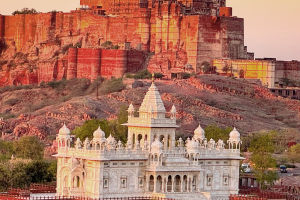
Greetings, Lykkers! Komodo National Park, located in Indonesia’s Lesser Sunda Islands, is a breathtaking destination known for its remarkable biodiversity and cultural significance.
Declared a UNESCO World Heritage Site in 1991, the park spans 1,733 square kilometers and includes the islands of Komodo, Rinca, Padar, and many smaller islands.
It is not just famous for its stunning landscapes and crystal-clear waters, but also as the habitat of the world’s largest lizard—the Komodo dragon!
Home to the Legendary Komodo Dragons
Komodo National Park is synonymous with the Komodo dragon (Varanus komodoensis), a species that has roamed the Earth for millions of years. These giants, growing up to 3 meters in length, are the largest living lizards on the planet. Endemic to the park, they attract visitors from all over the world, eager to witness these incredible creatures in their natural environment. The dragons are known for their fearsome reputation, powerful limbs, and sharp claws, but they also play a crucial role in maintaining the ecosystem's balance.
A Marine Paradise
Beyond the land-based wonders, Komodo National Park is a treasure trove of marine biodiversity. The park is surrounded by the coral-rich waters of the Coral Triangle, often considered the "Amazon of the seas." The waters host more than 1,000 species of fish, 260 species of coral, and numerous other marine creatures, including manta rays, sea turtles, and dolphins. Snorkelers and divers can explore some of the world’s most pristine underwater habitats, making the park a prime destination for marine life enthusiasts.
Conservation Efforts and Challenges
Despite its status as a World Heritage Site, Komodo National Park faces ongoing conservation challenges. The rapid increase in tourism has put pressure on its fragile ecosystems. In recent years, the Indonesian government has introduced measures to protect both the Komodo dragons and the surrounding marine life.
Efforts include stricter regulations for tourists, controlled access to the islands, and community engagement in sustainable tourism practices. These actions are aimed at preserving the park’s unique wildlife and ensuring that it remains a thriving sanctuary for future generations.
Cultural Significance and Local Communities
Komodo National Park is not just a natural wonder but also a place of cultural importance. The local communities living around the park, particularly on the islands of Komodo and Rinca, have long coexisted with the Komodo dragons and marine life. These communities depend on sustainable fishing practices and eco-tourism for their livelihoods. The government and local organizations work closely with these communities to promote conservation awareness and sustainable development.
World Heritage Day: A Reminder to Protect
On World Heritage Day, Komodo National Park takes center stage as a reminder of the importance of protecting our natural and cultural heritage. The park not only showcases the rare and endangered species like the Komodo dragon but also highlights the vital role of conservation in preserving ecosystems for future generations. With raising awareness about the challenges facing the park, World Heritage Day encourages global efforts to safeguard sites like Komodo National Park from the impacts of climate change, over-tourism, and habitat loss.
Komodo National Park is more than just a destination; it's a living legacy that showcases the beauty and fragility of nature. On World Heritage Day, take a moment to appreciate the incredible creatures that call this park home, and the natural wonders that make it so special. Lykkers can play a role in its future by supporting sustainable tourism and spreading the word about its significance. With continued conservation efforts, the unique heritage of Komodo will endure, offering an unforgettable experience for all who visit!


